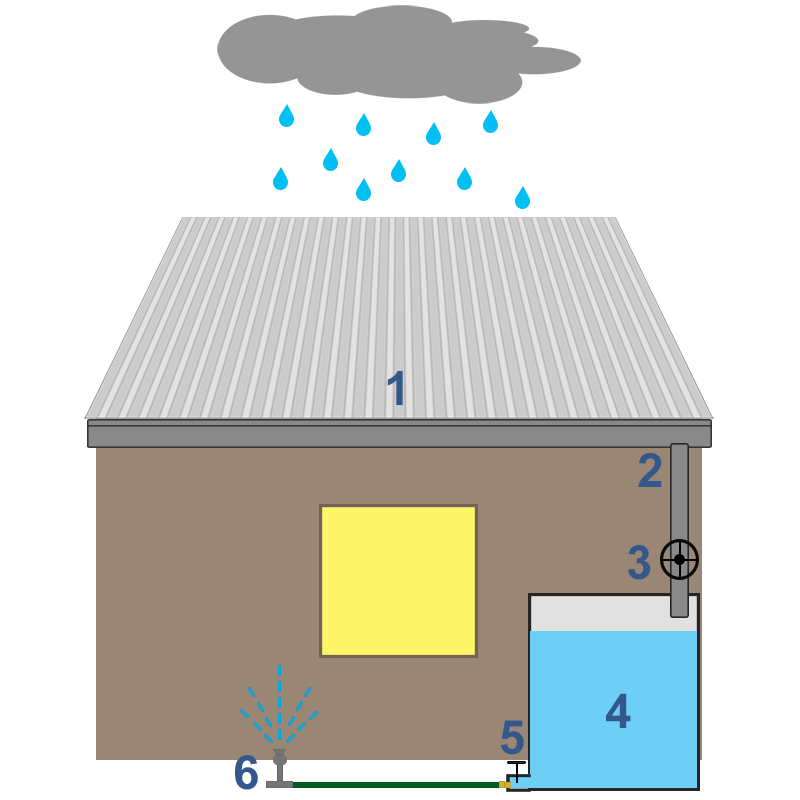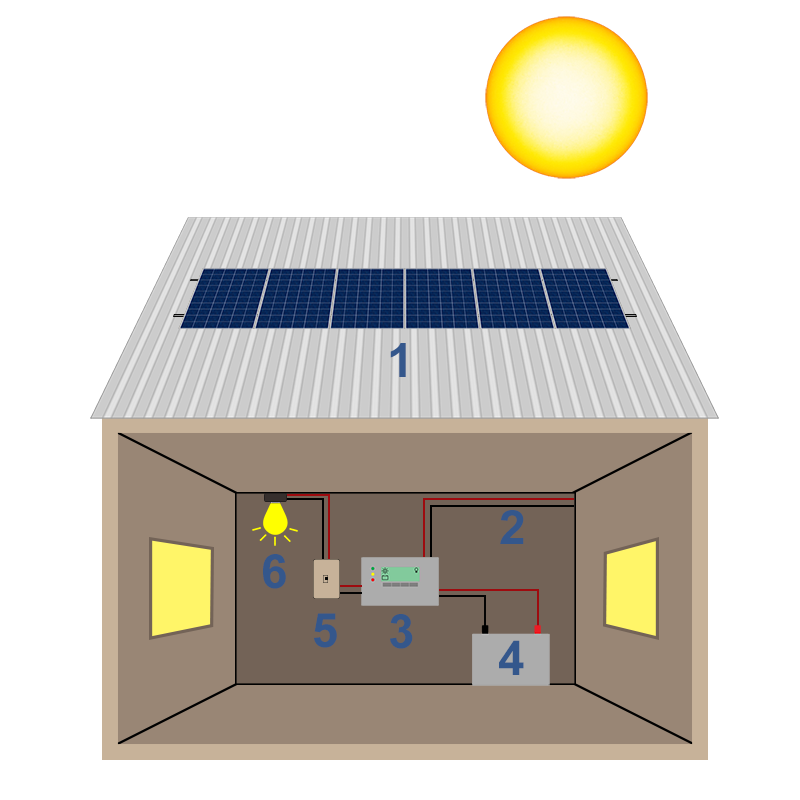What is an off-grid PV system?
The term off-grid encompasses many different system designs as it simply signifies an electrical system that is not connected to the electric grid. Off-grid power systems are installed to provide electricity in areas where the normal grid does not exist. The most common off-grid power system is a photovoltaic (PV) system with batteries. PV modules are used to generate electricity when the sun is shining, but the sun is a variable resource - it sets every day and is frequently hidden by clouds - therefore an off-grid PV system uses batteries to store some of the energy generated by the PV source for later use. This is similar to how rainwater collection systems function. It can be helpful to make this comparison between the two systems as a rainwater collection system uses simple components that are common in most parts of the world that serve similar functions to the more complicated components in an off-grid PV system. In the simplest sense both of the systems capture a variable natural resource - rainwater and sun - when it is abundant and store it for later use when it is scarce. To do so both of them have six basic components: a form of collection, a means of distribution, a way to regulate in-flows, storage, a way to regulate out-flows and a means of consumption.
Rainwater collection system

(1) The roofs surface collects the rainfall. (2) The gutter and pipes distribute the rainwater. (3) A valve is used to regulate in-flow of water to avoid overfilling the tank. (4) A tank stores rainwater for later use. (5) A valve is used to regulate out-flow of water to avoid emptying the tank completely. (6) A sprinkler can consume water from the tank as needed.
Off-grid PV system

(1) The PV modules collect the sun's rays and convert it into electric energy (2) Wires distribute the electric energy created from the PV modules. (3) The charge controller is used to regulate in-flow of electric energy to avoid overcharging the battery. (4) The energy storage system stores electric energy for later use. (5) A low voltage disconnect - which can be stand-alone or integrated into the charge controller and inverter - regulates out-flow of electric energy to avoid emptying the battery completely. (6) The loads - light or other appliances - can consume electric energy from the energy storage system as needed.